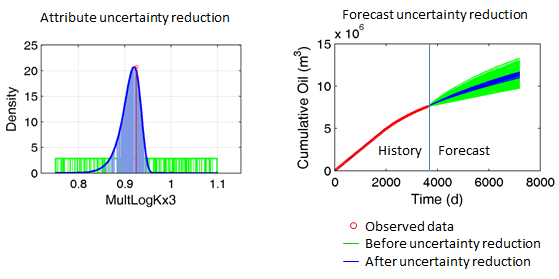
Production history matching is one of the most time consuming activity in the area of reservoir simulation and management whose objective is to increase the reliability of the production forecast and, consequently, increasing the exploitation efficiency. Although history matching has been extensively studied in the literature, the increase of the computational resources, in terms of software and hardware, as wells as the advances in reservoir characterization techniques, has allowing important progresses in history matching process. In this sense, a great effort has been dedicated at UNISIM in this research area in the last years, with significant results presented in dissertation and thesis, journal and conference papers and several projects sponsored by the petroleum industry and funding agencies.
It is important to highlight that the main objective of the research developed at UNISIM is to propose methodologies able to deal with practical cases, allowing the application to real fields. In general, the main research guidelines are: (1) the use of the reservoir engineering knowledge to support the analysis according to the physic of the problem; (2) the increase of the efficiency and efficacy of the process, reducing the number of simulation and improving the quality of the solutions; (3) the application of the methodology to complex cases. History matching is a multidisciplinary research area and, therefore, the main focus of the research is the integration of the process with other areas such as reservoir characterization, 4D seismic and uncertainty quantification.
There are still many challenges to be overcome in the area of history matching. Thus, the main objectives of this research line are: (1) to improve the assisted history matching process; (2) to propose and improve methodologies to integrate history matching and uncertainty analysis; (3) to study and apply new sampling and optimization methods, (4) to integrate the history matching process with the geostatistical modeling.






